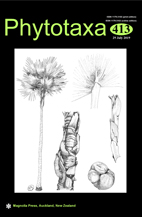Abstract
Previous studies of nrDNA (nuclear DNA) of Juniperus seravschanica indicated its nuclear DNA (ITS) was from an ancestor of J. polycarpos. However, analysis of cpDNA (chloroplast DNA) suggested the taxon had derived its chloroplast from an ancestor of J. foetidissima. That study has been viewed as putative, because the ITS region is sometimes unreliable for the detection of ancestral hybrids due to concerted evolution and lineage sorting. The recent availability of several single copy nuclear genes (SCNGs) with primers specifically designed for Juniperus presented an opportunity to fully investigate this case of putative chloroplast capture. Three phylogenetic analyses using five SCNGs (LHCA4, maldehy, myb, CnAIP3 and 4CL), ITS region, and four cpDNAs (petN- psbM, trnD-trnT, trnL-trnF and trnS-trnG) were performed on J. seravschanica, as well as other members of the J. excelsa complex: J. excelsa, J. polycarpos, and J. p. var. turcomanica. Analyses revealed incongruence between SCNGs, ITS region and cpDNA showing that J. seravschanica contains an ancestral J. foetidissima/ J. thruifera cp genome. In addition, the phylogenies indicate that the J. excelsa complex is composed of three distinct clades at the species level: J. excelsa, J. polycarpos and J. seravschanica and two varieties of J. polycarpos: J. p. var. polycarpos and J. p. var. turcomanica.

